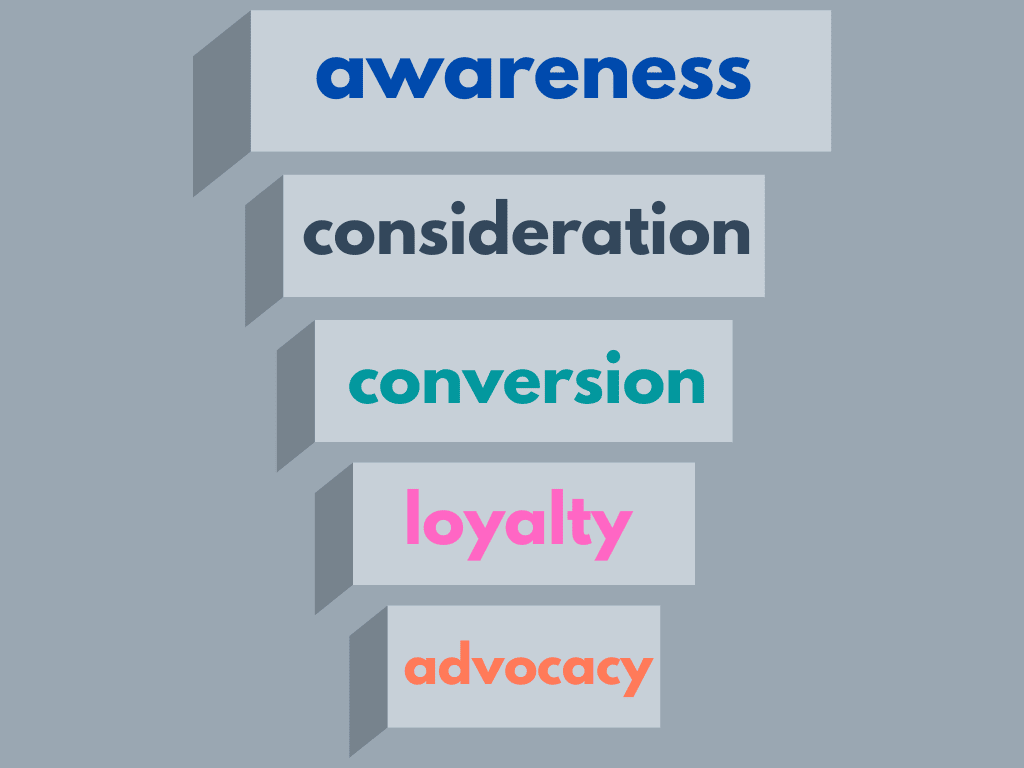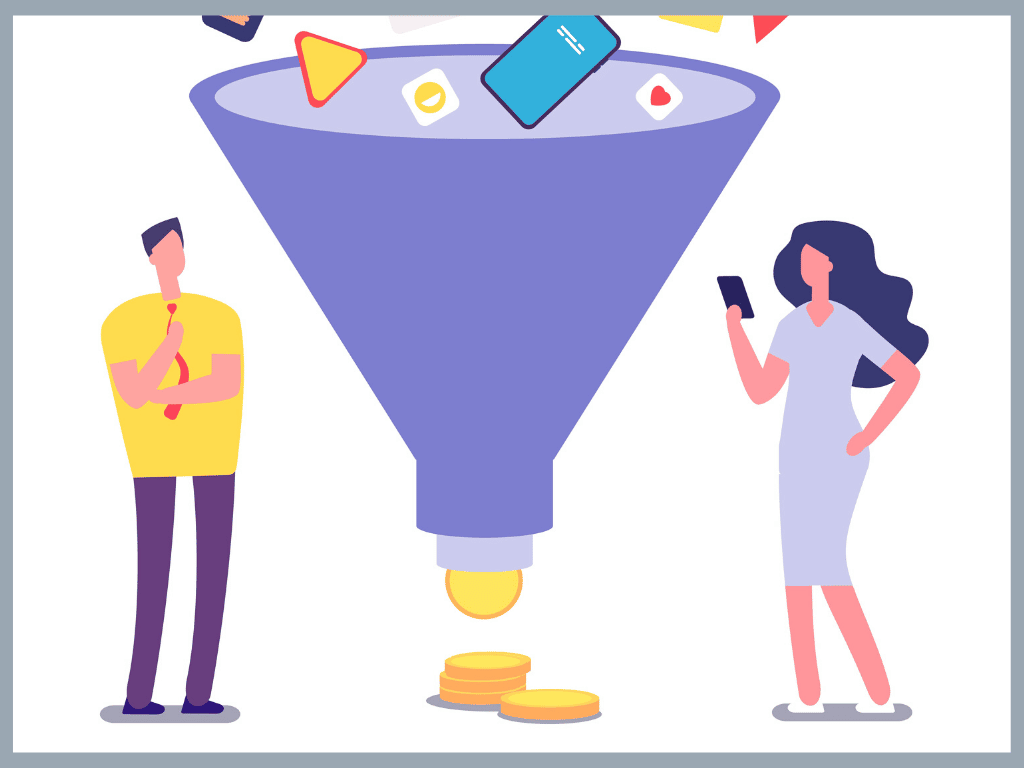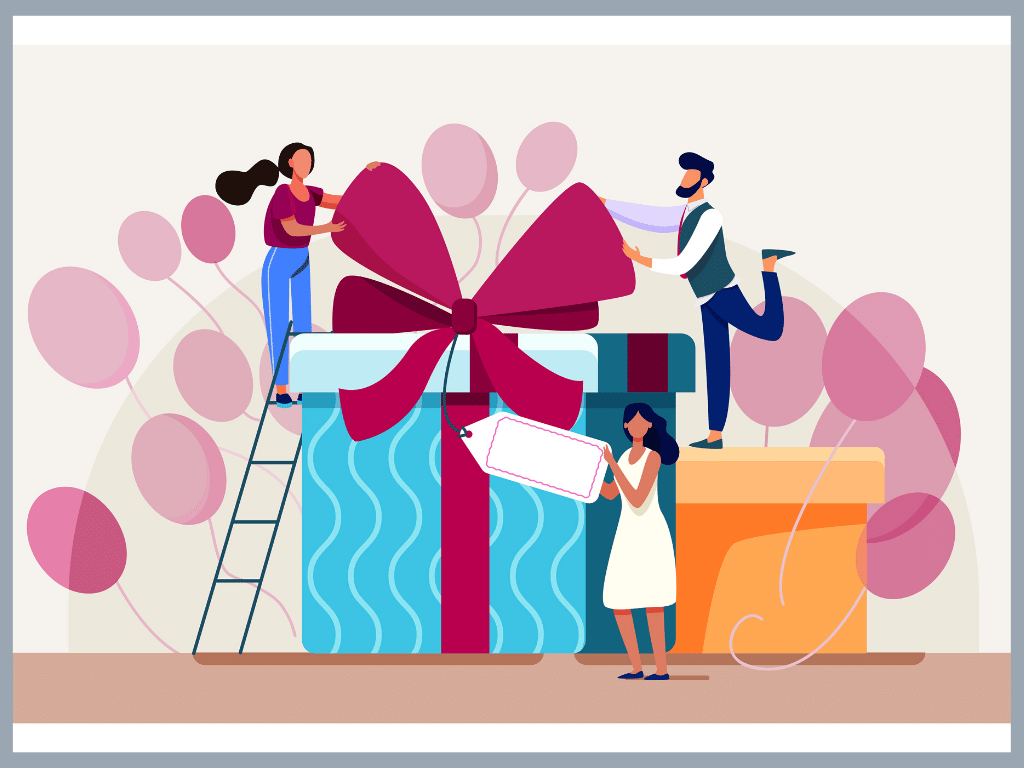A marketing funnel is a simple tool that helps convert leads into customers.
As a business owner, you want to make sure that a high percentage of people who see your company, either online or offline, actually engage with your product and leave by making a purchase.
However, the journey between seeing a product via an ad or search to buying the product can be convoluted, allowing many opportunities for the potential customer to be dissatisfied, disappointed and leave before buying the product.
A marketing funnel lets you visualize the steps of this journey, from customer acquisition to the purchase of a product, so you can analyse and optimise operations to ensure maximum sales.
Broadly, a marketing funnel consists of five steps:
- Awareness
- Consideration
- Conversion
- Loyalty
- Advocacy
Awareness entails creating an image for your brand, reaching out to people and telling them about your business, which leads to consideration, where a prospective customer weighs your business against your competitors to make a buying decision.
If a prospect chooses to engage in business with you, you have reached the conversion stage, where this prospect turns from a lead into a customer.The last two stages, loyalty and advocacy, involve maintaining customers to make them returning customers and using loyal customers to attract more potential leads to your business.

Marketing funnels are nearly universal and can be applied to most customer interactions, irrespective of the type or mode of business.
Their relative simplicity, accuracy and measurability make them useful resources for business owners in navigating the increasingly complex commercial space and helps them make decisions on how to optimize their businesses.
To understand the functionality of marketing funnels, let’s examine them in detail and see how they can be used for better decision making in business.
1) Awareness
As mentioned earlier, awareness consists of putting your brand out there. Obviously, to attract customers the first step is to tell them that you exist.
Awareness can be created through advertisements, effective social media marketing, tradeshows, emails, and consumer research.

Attracting people to your business requires you to not only solve a problem but also identifying people and communities that would benefit most from the solution your business offers.
These groups are likely to engage your product or service, making them potential customers.
The next step is to market your business to them and make sure that they are able to find you.
A potential customer may reach out to you either virtually or in-person, requiring you to have an effective reception, such as a website or phone service.
Google is one of the most popular platforms for consumers and businesses to find each other.
A consumer may search their query using Google’s search engine, leading them to thousands of solutions and businesses in their browser.
A business can use good SEO practices, a strong SEO strategy, keyword research and paid advertisements to rank at the top of search results and increase their chances of being clicked on.
Apart from Google, businesses can also create content, such as YouTube videos, blog posts on Medium, Instagram and Pinterest pictures, and Reddit or Facebook posts.
Most big businesses have a viable presence on all these platforms, with fashion and beauty brands usually focusing on Instagram and YouTube and digital agencies sticking to Medium and Facebook.
Quora is another useful platform that helps you reach and identify potential customers, letting you answer their queries, offering solutions and pitching your business idea.
Another technique that has gained immense popularity since the advent of social media is using famous persons and their audiences to promote your product.
Such ‘influencers marketing’ is especially popular on Instagram, Facebook and YouTube, and is effective because it acts through referral and eases the consideration phase for the consumer, giving you an edge over a competitor.
This stage is also referred to as TOFU (Top of Funnel)
2) Consideration
Now you have piqued the consumer’s interest. They found you, engaged with your content and have seen the solutions you offer.
Naturally, they might now compare you with competitors to make sure they are getting the best of their buck.

At this stage it is beneficial to introduce customers to product details, sending targeted emails, newsletters or webinars.
Case studies, customer reviews and free trials are good primers to help your customers understand your product and will give you an advantage as the prospect feels more comfortable and familiar with your business.
This is a crucial stage for both businesses and their leads as it is the step before sealing the final purchase.
It is pivotal for the business to retain the lead’s interest and guide them towards making a purchase.
The consideration stage may be further divided into an ‘intent’ phase, where the prospective lead demonstrates interest in a particular product or service, and an ‘evaluation’ phase where the prospect compares competing businesses before making a purchasing decision.
After spending money and resources to identify potential customers, you want to make sure most of them pass through the consideration phase swiftly and confidently and proceed to buy your product.
Good personalised or targeted content along with dedication and nurturing leads aids in transitioning to the conversion stage.
Online businesses and e-commerce websites often use this stage to send coupons, discounts and offer purchase incentives such as free delivery or complimentary items.
Lead tracking tools such as Zoho, Quickbase and Hubspot can be used to monitor the amount of time a lead spent on your page, the content then engaged with the most and whether products were added to the cart and/or abandoned.
This stage is also called as MOFU (Middle of Funnel)
3) Conversion
Conversion- At the conversion or purchase phase, the lead makes a purchase and becomes a customer.

For the best customer experience, comprehensive and clear information must be provided on how to make a purchase such as well-designed and error-free checkout pages.
This is a good time to point customers towards upsells, or products related to their purchase and giving them incentive to purchase more of your product.
Many businesses use urgency as a driver to hasten the conversion process by informing users if a particular item is going out of stock or offering free product delivery if the purchase is made within a certain time period.
This stage is also called as BOFU (Bottom of Funnel)
4) Loyalty & Advocacy
Loyalty and Advocacy- Customer acquisition is expensive, an easy way to maintain a constant stream of traffic is to invest in returning customers and reward them for their loyalty.

Customers return to a business or product only if they were impressed by it, and trust it to be worthy of their time and money.
A satisfied customer is a valuable resource in promoting a brand and product to other potential leads within their communities.
They are looked at as reliable sources of information and can use word-of-mouth marketing to significantly increase attention towards your business.
Loyal customers can be incentivised through loyalty and referral programs, for example, Uber offers cash credits for referrals and a rewards program for loyal US customers.
Loyalty and referral programs not only incentivise but also build trust and personal relationships between the brand and its customers.
Another form of advocacy is the use of hashtags and blog posts on social media, especially on Twitter and Instagram.
Brands often engage with their customers on social media post-purchase, encouraging them to post pictures, reviews and videos with particular hashtags.
These forms as engagement then act as content to promote brands not only within the customers’ niche but also to a wider audience.
Non-Linear Marketing Funnels
In the digital, social world leads and prospects interact with businesses in a more non-linear fashion.
They do not start at the awareness stage, often coming in at the intermediary stages, and skip steps of the marketing funnel.
An alternative to the marketing funnel is the Customer Decision Journey created by McKinsey, where prospects move through their purchase journey with checkpoints in a circular rather than linear fashion.
The Flywheel is another model advocated by some experts, that focuses on certain aspects of the journey and minimizing friction from any intermediary steps of the purchase journey.
In conclusion, a Marketing Funnel is a useful tool in managing and optimizing a business.
Google Analytics offers software that can be used to create simple funnels and gain a basic overview of the businesses’ performance and customer data.
Marketing funnels help you visualize the strong assets of your business and show you where you are losing customers, which can be leveraged to design smarter strategies and grow the business.